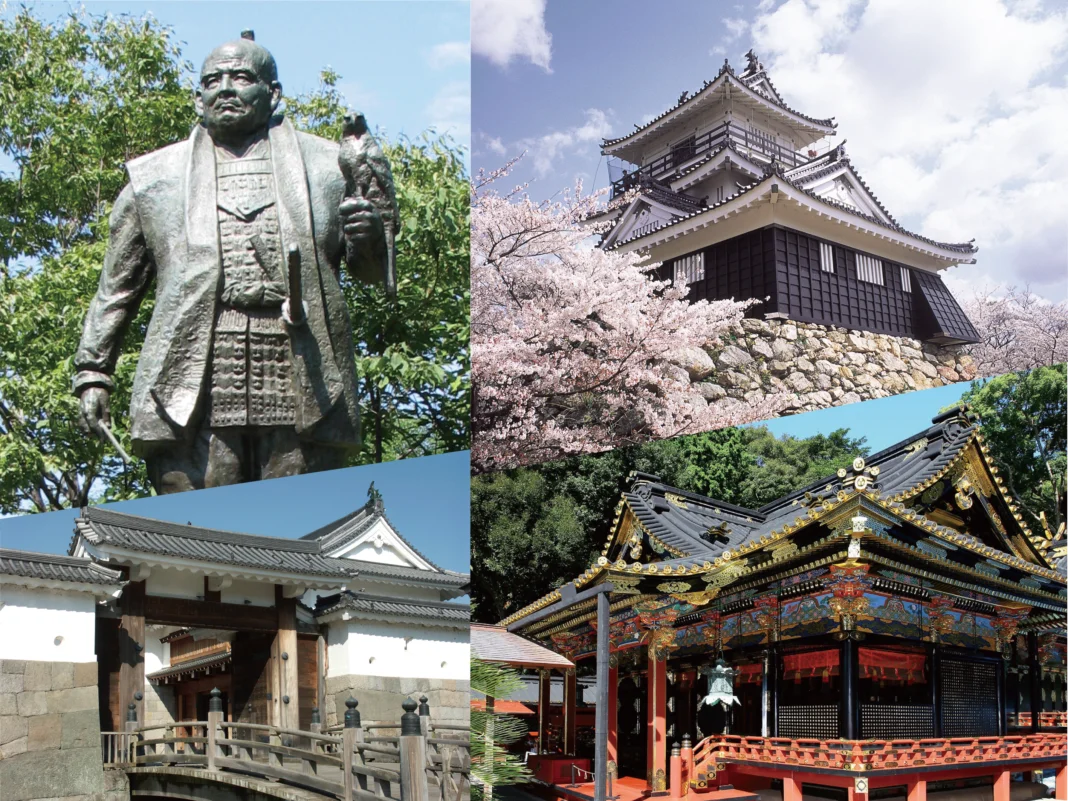Tokugawa Ieyasu, the founder and first shogun of the Edo shogunate that ruled Japan from 1603 until the Meiji Restoration in 1868, spent his childhood in Sunpu (present-day Shizuoka City) as a hostage of the Imagawa clan, a feudal lord who ruled Suruga Province and Totomi Province (present-day central and western Shizuoka Prefecture), and from his adolescence to his late middle age, when he was allied with Nobunaga Oda, one of the most powerful warlords of the time, he resided at Hamamatsu Castle and Sunpu Castle.
Here, we would like to visit various places related to Ieyasu while tracing his footsteps from childhood to adulthood.
Early childhood – To Sunpu as a hostage of the Imagawa clan –
Ieyasu (born Matsudaira Takechiyo) was born in 1542 as the eldest son of the Matsudaira family, lords of Okazaki Castle in Mikawa Province (present-day eastern Aichi Prefecture), and during the reign of his father Hirotada, the Matsudaira clan came under the Imagawa clan, then a powerful warlord, and as a sign of loyalty he was taken hostage by the Imagawa clan, spending 12 years in Sunpu, from the age of 8 to 19.
Rinzai-ji Temple (Shizuoka Prefecture)
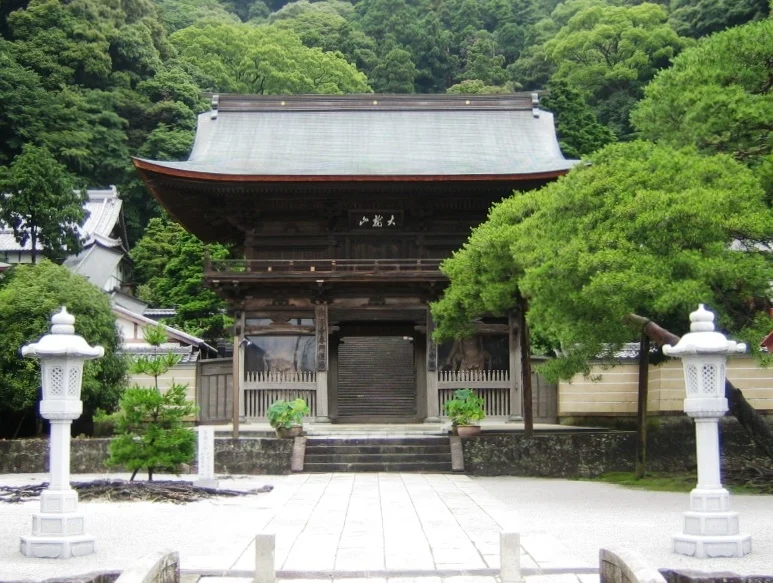
Rinzai-ji Temple is located in Aoi Ward, Shizuoka City, about a 25-minute walk from Sunpu Castle Park in downtown Shizuoka, at the foot of Mt. Shizuhata, known as the origin of the name “Shizuoka”.
As the family temple of the Imagawa clan, the graves of Ujiteru and Yoshimoto Imagawa are enshrined here, as well as the tablets of the heads of the Imagawa clan, and it is also known as the place where Ieyasu, as hostage of the Imagawa clan from his early childhood, received education from Zen Master Taigen Sessai, who was also Yoshimoto’s advisor, and learned about ethics and philosophy as a military commander.
Later, in 1568, when Takeda Shingen began his attack on Suruga, Sunpu Castle was set on fire and the hall of Rinzai-ji Temple was burned to ashes, but Ieyasu, who took over Suruga Province after the fall of the Takeda clan, rebuilt the temple in 1582 by order of Emperor Ogimachi, and it continued to receive generous patronage from the Edo shogunate.
The existing main hall is designated as a National Important Cultural Property, and the “Takechiyo Tenarai-no-ma,” where Ieyasu received his education, has been restored.
*Rinzai-ji Temple is a training center for Rinzai Zen, so it is normally closed to the public, but twice a year (May 19 and October 15) it is open to the public.
For more information, click here.
Shizuoka Sengen Shrine (Shizuoka City)

Shizuoka Sengen Shrine is a 15-minute walk from Sunpu Castle Park and, like Rinzai-ji Temple, is located at the foot of Mt. Shizuhata (about a 10-minute walk from Rinzai-ji Temple).
It is known for being the place where Ieyasu held his coming-of-age ceremony at the age of 14, when he was a hostage of the Imagawa clan, and after coming of age, Matsudaira Takechiyo took the name Matsudaira Motoyasu.
Later, in 1581, after praying for victory against the Takeda clan and vowing to rebuild the shrine after the war, Ieyasu burned down Shizuoka Sengen Shrine as part of his strategy to destroy the Takeda clan’s Shizuhatayama Castle, which stood behind the shrine. In 1586, to fulfill his promise, he solicited contributions from various areas in the Tokai region, and the shrine was rebuilt. Ieyasu’s lifelong devotion to the shrine led to it becoming a place of prayer for successive Tokugawa shoguns and receiving generous patronage from the Edo Shogunate.
Although the shrine was destroyed by fire on several occasions, most of the shrine that remains today was rebuilt over a 60-year period beginning in 1804 at a cost of 100,000 ryo (about 10 billion yen in today’s currency), and today, the shrine and its 26 structures have been designated as a National Important Cultural Property.
For more information, click here.
While Ieyasu’s childhood as a hostage of the Imagawa clan was a time of hardship and suffering for him and the Matsudaira family, his talent as a military commander was recognized early on by Zen Master Taigen Sessai, who gave him an education that greatly influenced Ieyasu’s personal development. It could be said that perhaps it was Shizuoka’s mild climate and rich people and nature that supported and nurtured the childhood of Ieyasu, who would later grow up to be a great ruler of the nation.
Adolescence to late middle age – From forming an alliance with Nobunaga, to becoming a feudal warlord! –
In 1560, when Imagawa Yoshimoto was defeated by Nobunaga Oda at the Battle of Okehazama, Ieyasu (Matsudaira Motoyasu) took the opportunity to return to Mikawa Province. In 1562, he formed an alliance with Oda Nobunaga to gain independence from the Imagawa clan, and thereafter changed his name to Tokugawa Ieyasu and grew as a daimyo (feudal warlord) in the Warring States period.
Motoshirocho Toshogu Shrine (Hikuma Castle Ruins) (Hamamatsu City)
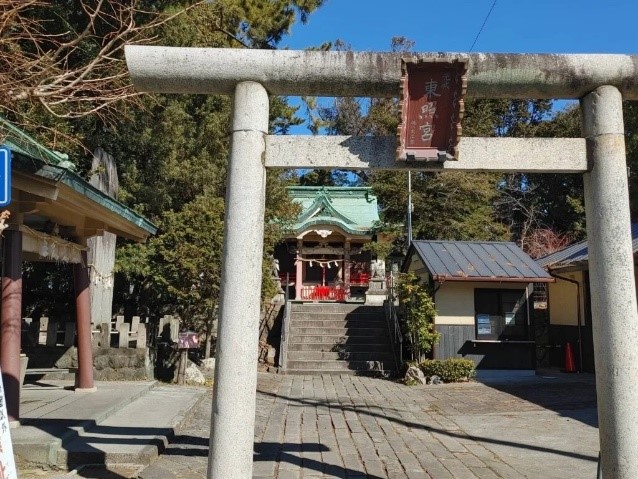
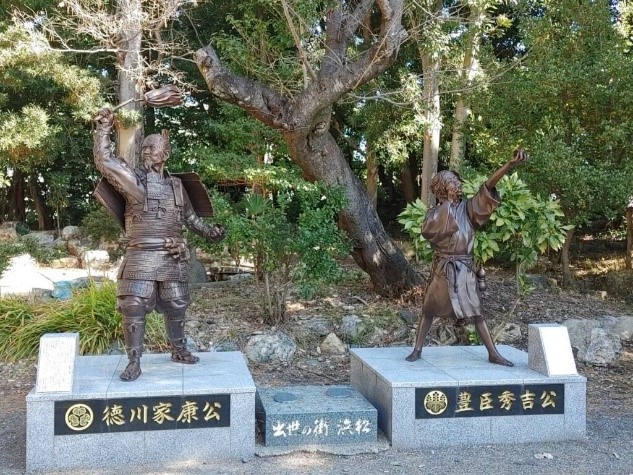
Motoshirocho Toshogu Shrine (Hikuma Castle Ruins) is located in the center of Hamamatsu City, about a 15-20 minute walk from JR Hamamatsu Station.
In 1568, Ieyasu, taking advantage of the decline of the Imagawa clan, invaded Totomi Province and seized Hikuma Castle (old castle) and entered the fortress.
Later, it was greatly expanded and the main castle building was constructed on the west side of the old castle and named “Hamamatsu Castle”, which was the origin of the name “Hamamatsu”, and Hikuma Castle was incorporated into the vast Hamamatsu Castle as one of its structures.
Later, in 1886, after the Meiji Restoration, Inoue Enryo, a former shogunate vassal and Hamamatsu Castle representative, wanted to build a Toshogu shrine dedicated to Ieyasu at the site of Hikuma Castle, where Ieyasu once resided, and constructed the Motoshirocho Toshogu Shrine on this site. This shrine was destroyed by fire during the war, but was rebuilt in 1958 and remains to this day.
When Iio Buzen-no-kami, a vassal of the Imagawa clan, was the lord of Hikuma Castle, Toyotomi Hideyoshi (Kinoshita Tokichiro), who was still called by his nickname “Saru” (monkey) and was an unknown young man at the time, served under the Matsushita family for three years from the age of 16 to 18.
Because Toyotomi Hideyoshi and Tokugawa Ieyasu, two heroes who would later unify Japan, spent their years of obscurity here and later overcame all sorts of difficulties to rise to greatness, the present-day Motoshirocho Toshogu Shrine is known for ascending the two to greatness and is known as a powerful spiritual site where visitors come pray for good fortune success, and a bronze statue of the two men stands within the shrine grounds.
For more information, click here.
Hamamatsu Castle (Hamamatsu City)

For 17 years from the ages of 29 to 45, a period spanning from 1569 to 1586, Ieyasu resided at Hamamatsu Castle, where he spent his youth. During this period, he was allied with Oda Nobunaga and was placed in the middle of fierce battles with his rivals, the Takeda clan, Azai clan and Asakura clan. It was during this time that the famous Battle of Mikatagahara and Sieges of Takatenjin, which will be described later, and other encounters such as the Battle of Anegawa, Nagashino, Komaki and Nagakute were fought.
Successive feudal warlords of the Tokugawa family continued to reside at Hamamatsu Castle during the Edo period, and the castle is also known as the “Shusse Castle” (Castle of Success) because many successive lords of the castle rose to important positions in the Edo shogunate.
Although the castle was abandoned with the Meiji Restoration, the ruins of Hamamatsu Castle became “Hamamatsu Castle Park” in 1950, and the reconstructed castle tower was rebuilt in 1958.
Today, Hamamatsu Castle Park is a place for local residents to relax and enjoy the cherry blossoms, and the castle tower serves as a museum where visitors can see various items related to Ieyasu, including Ieyasu’s Kindami gusoku armor, which is said to have been worn by Ieyasu when he was 19 years old.
For more information, click here.
Saigagake Museum (Hamamatsu City)
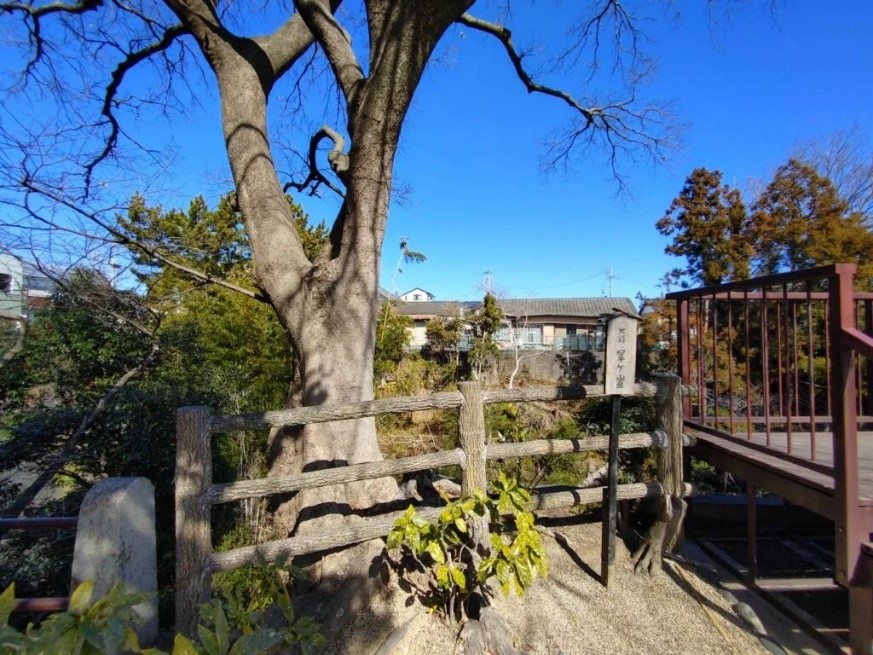
In 1573, Takeda Shingen of Kai Province (present-day Yamanashi Prefecture) led a large army to the capital city of Kyoto to fight a decisive battle with Nobunaga Oda, but in the process, he marched to Hamamatsu Castle, where Ieyasu resided, and provoked Ieyasu by ignoring his presence. Enraged, Ieyasu stormed out of his castle and challenged the Takeda cavalry to a decisive battle at Mikatagahara (Battle of Mikatagahara), but he suffered a crushing defeat in front of the Takeda cavalry, which was said to be the strongest in the Warring States period.
Ieyasu, who fled back to Hamamatsu Castle with only a small group of advisors, overcame the greatest crisis of his life by opening all the castle gates, lighting a bonfire, and using the so-called “empty castle strategy” (a strategy of inviting the enemy into one’s own position in order to let their guard down) to arouse the wariness of the brave general Yamagata Masakage, who was storming the castle and made him hesitate to enter it.
Although he suffered a heavy defeat, Ieyasu tried to take revenge somehow by stretching a white cloth over Saigagake (Saiga Cliff) to make it look like a bridge, and launched a surprise attack at night on the Takeda forces that were camped nearby. It is said that Takeda’s troops, who were not familiar with the geography, fell down the cliff in a state of confusion, resulting in many deaths.
Saigagake is a ravine located about 1 km north of Hamamatsu Castle, and was designated as a historical site by Shizuoka Prefecture in 1939 as the site of the Battle of Mikatagahara. At the nearby Saigagake Museum, visitors can view exhibits related to the Battle of Mikatagahara and other historical events.
For more information, click here.
Takatenjin Castle Ruins (Kakegawa City)
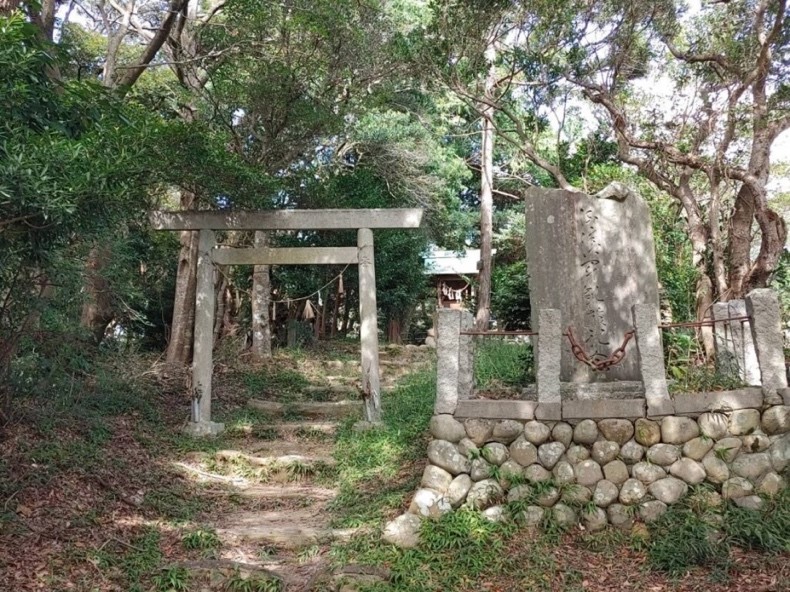
Takatenjin Castle was a mountain castle located at a strategic area in present-day Kakegawa City, where it was said that “whoever controls Takatenjin controls Enshu,” and it was referred to as an “impregnable fortress” because it was considered the greatest stronghold in the Tokai region, taking advantage of the topography of the 132 meter-tall Mt. Kakuozan. This was also the site of a fierce battle between Ieyasu and Takeda Shingen and Katsuyori, and is known as one of the most famous battlegrounds in the history of the Warring States period.
In 1574, Takeda Katsuyori mobilized 25,000 troops to attack Takatenjin Castle (the first siege of Takatenjin Castle) and finally captured the stronghold, which even his father Shingen could not accomplish.
However, when the Takeda forces were defeated by the Oda-Tokugawa allied forces at the Battle of Nagashino in 1575, the Tokugawa forces went on the offensive, cutting off the supply route to Takatenjin Castle by occupying Suwahara Castle and other surrounding castles, and in 1580, they launched a long-awaited all-out attack (the second siege of Takatenjin Castle). Okabe Motonobu, the castle’s commander, fought fiercely, but after their food supply was cut off and Takeda Katsuyori was unable to send reinforcements, Okabe and his men stormed out of the castle the following year in 1581, charging into the enemy lines, resulting in most of them being killed in a spectacular climax to the battle.
The current site of the Takatenjin Castle Ruins was selected as one of the 100 best castles in Japan in 2017, and features a walking trail for visitors as a designated National Historic Site. Covered with dense cedar and cypress trees, the stone steps, which are dark even in the daytime, lead up to the summit, where you can see that the entire mountain was a huge fortress.
***********
During his time at Hamamatsu Castle, Ieyasu was placed in the middle of fierce battles with the Takeda clan and others as an ally of Nobunaga Oda, and again faced a series of hardships. He suffered a particularly heavy defeat in the Battle of Mikatagahara, where he had a near-death experience, but it is also said that this battle proved that Ieyasu was a military commander who would not allow his territory to be overrun by the powerful Takeda clan, and that he would protect it at all costs, fulfilling his duty as a feudal warlord.
In this way, Ieyasu made a name for himself as “Tokaido’s greatest archer” in Hamamatsu, and established a foothold for his later ascension to becoming one of the greatest rules in all of Japan.
Perhaps it was the vitality of Hamamatsu, known as the “city of success,” and the passion of its residents that gave Ieyasu the energy he needed to rule over the country at such a young age?
